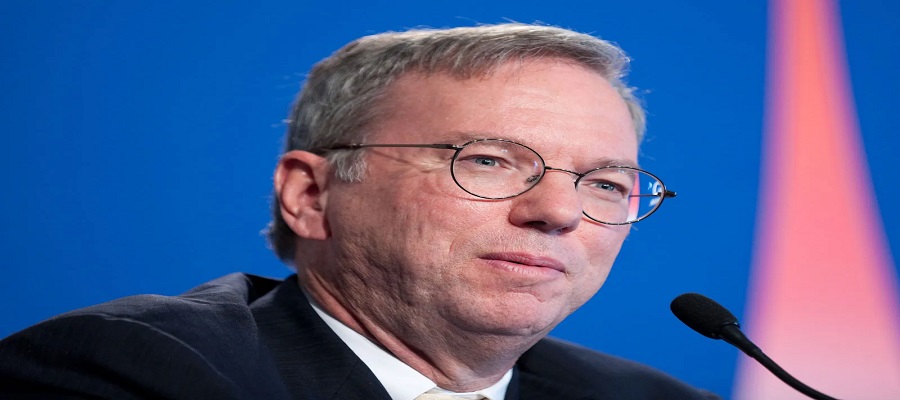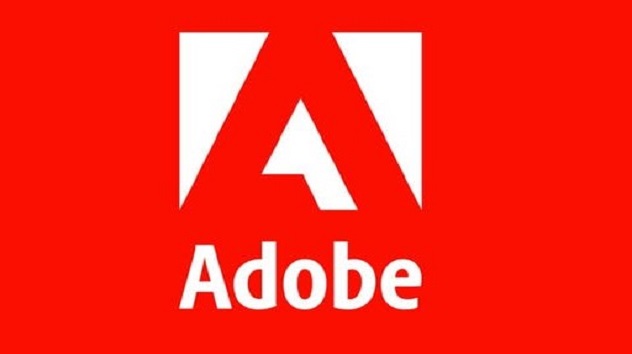E-Business
HP Wolf Security Report Reveals Perfect Storm of Cybersecurity Risks that Threatens Hybrid Workplace

HP Inc. yesterday released its latest HP Wolf Security report: Out of Sight & Out of Mind, a comprehensive global study highlighting how the rise of hybrid work is changing user behavior and creating new cybersecurity challenges for IT departments.

The research shows that a growing number of users are buying and connecting unsanctioned devices outside of IT’s purview. It also highlights that threat levels are rising, with attackers increasingly successful at bypassing defenses and tricking users into initiating attacks through phishing. All of this is making IT support more complex, time-consuming, and costly than ever.
The report combines data from a global YouGov online survey of 8,443 office workers who shifted to Working from Home (WFH) during the pandemic, and a global survey of 1,100 IT decision makers conducted by Toluna. Key findings include:
- New Shadow IT buying and installing endpoints with security out of mind: ‘Shadow IT’ typically refers to non-IT departments deploying software beyond the purview of IT. This shadow is now spreading, with individuals procuring and connecting devices without being checked by IT. 45% of office workers surveyed purchased IT equipment (such as printers and PCs) to support home working in the past year.
However, 68% said security wasn’t a major consideration in their purchasing decision, while 43% didn’t have their new laptop or PC checked or installed by IT, and 50% said the same of their new printer.
- Phishing becoming increasingly successful: 74% of IT teams have seen a rise in the number of employees opening malicious phishing links or attachments on emails in the last 12-months. 40% of office workers surveyed aged 18-to-24 have clicked on a malicious email with almost half (49%) saying they have done so more often since working from home.
Of office workers that clicked or nearly clicked a link, 70% didn’t report it to IT – 24% didn’t think it was important, 20% cited the “hassle factor”, while 12% had a fear of reprisal or being punished.
- Increase in devices being compromised fuels growth in rebuild rates: 79% of IT teams report rebuild rates increased during the pandemic. Rebuild rates directly correlate to the number of endpoints that require wiping and reimaging because they have been compromised, which implies more attackers are successfully breaching outer defenses. The real figure could be higher still: 80% of IT teams worry that employee devices might be compromised and they don’t know about it.
“People often don’t know if they have clicked on something malicious, so the real numbers are likely much higher,” comments Ian Pratt, Global Head of Security for Personal Systems, HP Inc. “Threat actors don’t always announce themselves, as playing the ‘long game’ to move laterally and infiltrate higher-value infrastructure has proven to be more lucrative. For example, by using cloud backups to exfiltrate sensitive data in bulk, encrypting data on servers, then demanding a multi-million-dollar ransom.”
Pratt continues: “It shouldn’t be this easy for an attacker to get a foothold — clicking on an email attachment should not come with that level of risk. By isolating and containing the threat you can mitigate any harmful impact, preventing persistence and lateral movement.”
With threats rising, it’s becoming more difficult for IT teams to deliver security support. 77% of IT teams said the time it takes to triage a threat has increased in the past year, while an estimated 62% of alerts relating to the endpoint are false positives, leading to wasted time. With IT teams tied up dealing with alerts, it’s becoming harder for them to onboard employees and identify threats:
- 65% of IT teams said that patching endpoint devices is more time-consuming and difficult due to the mass shift to home working, while 64% said the same of provisioning and onboarding new starters with secure devices.
- As a result, IT teams estimate the cost of IT support in relation to security has risen by 52% in the last 12-months.
- 83% of IT teams said the pandemic has put even more strain on IT support because of home worker security problems, while 77% of IT teams say homeworking is making their job much harder and that they fear teams will burnout and consider quitting.
“As IT continues to grow in complexity, security support is becoming unmanageable,” Pratt concludes. “For hybrid working to be a success, IT security teams need to be freed from spending hours provisioning and fielding user access requests so they can focus on tasks that add value.
“We need a new security architecture that not only protects against known and unknown threats, but that helps to reduce the burden to liberate cybersecurity teams and users alike. By applying the principles of Zero Trust, organizations can design resilient defenses to keep the business safe and recover quickly in the event of a compromise.”
HP is helping organizations to secure the hybrid workplace by delivering endpoint security that provides teams with greater visibility and management tools. With HP Wolf Security organizations benefit from robust, built-in protection from the silicon to the cloud, and BIOS to browser.
HP Wolf Security provides the ideal support for securing the hybrid workplace – for example HP Sure Click Enterprise reduces the attack surface by rendering malware, delivered via email, browser or downloads, harmless through threat containment and isolation.
HP Wolf Security enables teams to deliver defense-in-depth and enhanced protection, privacy, and threat intelligence, gathering data at the endpoint to help protect the business at large.
E-Business
Schmidt, Ex Google Chief Says AI Risky in Terrorist Hands

Eric Schmidt, former Google CEO has expressed concerns about the extreme risks posed by artificial intelligence (AI) falling into the hands of terrorists or rogue states.

Eric Schmidt, former Google CEO
He warned that nations such as North Korea, Iran, and Russia could adopt AI technologies to develop weapons capable of causing significant harm, including biological weapons.
Schmidt urged governments to oversee private tech companies, emphasising, “The real fears I have are not the ones most people discuss about AI, I talk about extreme risk.”
“I’m always worried about an ‘Osama Bin Laden’ scenario, where truly evil individuals take control of some aspect of modern life to harm innocent people,” he added.
With private companies driving AI advancements, he stressed the need for careful government monitoring and regulation. “It’s really important that governments understand what we’re doing and keep their eye on us,” he said.
His remarks followed a two-day AI summit in Paris, where the UK and the U.S. declined to sign a communiqué outlining the future direction of AI. The declaration on “inclusive and sustainable artificial intelligence for people and the planet” was endorsed by 57 countries, including India, China, the Vatican, the EU, and the African Union Commission.
The UK justified its decision, stating that the agreement lacked “practical clarity” on global AI governance and national security concerns.
Schmidt supports U.S. export controls restricting the sale of advanced AI microchips to certain countries, aiming to slow adversaries’ progress in AI research.
He also highlights the importance of international collaboration on AI safety, suggesting that cooperation with nations like China is essential to addressing global AI challenges.
E-Business
OpenAI CEO Rejects $97.4Bn Takeover Bid from Elon Musk

Sam Altman, chief executive of ChatGPT-owner OpenAI, has firmly declared the company “not for sale” following a $97.4bn (£78.4bn) takeover bid from a consortium led by Elon Musk.

Elon Musk
Speaking at the AI Action Summit in Paris, Altman emphasised OpenAI’s mission to develop AGI (artificial general intelligence) for the benefit of humanity.
Marc Toberoff, attorney for Elon Musk, confirmed the bid submission on Monday.
In response, Altman humorously offered to buy Twitter for $9.74 billion on Musk’s platform.
Unlike many tech giants, OpenAI is not publicly traded but operates through a complex partnership between non-profit and for-profit entities.
Musk aims to return OpenAI to its non-profit roots, despite owning a rival firm, xAI.
Christie Pitts, a tech investor, expressed scepticism about Musk’s intentions, noting his competitive interests.
Altman echoed this sentiment, suggesting Musk’s move disregards OpenAI’s mission.
Altman, who holds no stock in OpenAI, advocates transforming the organisation into a fully for-profit company to raise more funds for AI research.
Although the board has the final say, the $97.4bn offer falls short of OpenAI’s previous $157bn valuation and rumoured $300bn in future funding talks.
Toberoff stated the consortium might increase their bid. Meanwhile, OpenAI is collaborating with Oracle, a Japanese investment firm, and an Emirati sovereign wealth fund on “The Stargate Project,” a $500 billion AI infrastructure initiative announced by President Donald Trump.
E-Business
Adobe Launches AI Video Tool to Compete with OpenAI

Adobe yesterday released the first public version of an artificial intelligence tool that can generate video clips and revealed how much it will charge, but said it will not set pricing for major users such as studios until later this year.

The Firefly Video Model, as Adobe is calling the service, will compete against Sora, a model developed by ChatGPT creator OpenAI, and startup Runway, both of which currently offer video-generation services. Facebook owner Meta Platforms has also developed a video-generation AI model but has not given a timeline for when it will be released.
Adobe’s model differs from its rivals because it is geared toward generating clips that will fit into how film and television studios use Premiere Pro, its flagship video editing software.
To that end, many of the features that Adobe is emphasizing revolve around feeding existing shots into the video model and asking it to generate clips that fix or expand on shots that were taken on a real production set but that did not come out quite right.
Adobe said the service will generate five-second clips at 1080p resolution. While that is shorter than the clips of up to 20 seconds generated by OpenAI’s service, Adobe executives said the majority of individual clips in most productions are only three seconds.
Adobe said a user can generate 20 clips per month for $9.99 and 70 clips for $29.99. That compares with 50 videos for $20 per month with OpenAI’s plan at lower resolution and a $200 OpenAI plan that can handle longer, higher resolution videos.
Adobe is also working on a “Premium” pricing plan for studios and other high-volume video users and will release those pricing details later this year. Alexandru Costin, Adobe’s vice president of generative AI, said the company is working to generate 4K video and will remain focused on quality rather than longer clips.
“We actually think that great motion, great structure, great definition scheme, making the actual clip look like it was film, is more important than making a longer clip that’s unusable,” Costin told Reuters.

 News2 days ago
News2 days agoTikTok Returns on Apple, Google US App Stores as Trump Delays Ban

 General News2 days ago
General News2 days agoResearchers Develop Innovative Treatment for Malaria

 E-Financial2 days ago
E-Financial2 days agoAfrican Union Launches Credit Rating Agency to Promote Regional Economic Integration

 General News2 days ago
General News2 days agoNigeria to Host ICEGOV 2025, A Milestone in Digital Governance and Global Leadership

 Broadcasting2 days ago
Broadcasting2 days agoFG Kickstarts Construction of Emerging Technologies Institute in Kano

 Telecom2 days ago
Telecom2 days agoVisa Launches Report on Digital Payment Landscape in Nigeria, Shows Positive Outlook

 General News2 days ago
General News2 days agoMTN Nigeria Foundation Supports Education with Donation of School Supplies to 1000+ Students

 Broadcasting2 days ago
Broadcasting2 days agoFamily Marks one-year Memorial of Late APC Chieftain, Ojougboh with Charity Outreach



























